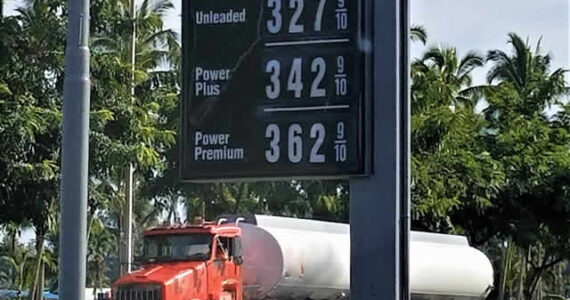Purchasing a new car is a significant decision, involving careful consideration of models, features, and finances. For many Americans, a foreign-made car is a top contender. However, a less visible factor is now playing a major role in the car-buying process: automobile tariffs.
These taxes on imported goods can quietly inflate the sticker price of your dream car, influencing everything from your monthly payment to insurance rates. Understanding how tariffs work is essential for anyone navigating the U.S. automotive market today.
This post will explore the current landscape of automobile tariffs in the United States. We will look at how these policies affect the prices you see at the dealership, the choices available to you, and the broader economic implications for both car manufacturers and the nation.
By the end, you will have a clearer picture of how these trade policies could impact your next vehicle purchase.
Background on U.S. Automobile Tariffs
A tariff is a tax imposed by a government on imported goods. The primary purpose is often to protect domestic industries from foreign competition by making imported products more expensive, thereby encouraging consumers to buy domestically produced goods.
They also serve as a source of revenue for the government. The U.S. has a long history of using tariffs to shape its economic landscape, and the automotive industry has frequently been at the center of these policies.
Recently, the topic of automobile tariffs gained prominence. A significant development occurred on September 15, 2025, when a 25% tariff was announced for all cars built outside the United States, as well as many parts used in domestically assembled vehicles.
According to reports from Kelley Blue Book, these tariffs were implemented starting April 3 for imported cars and May 3 for car parts, marking a pivotal shift in the automotive market. This move has reignited discussions about the role of trade policy in the modern economy and its direct impact on American households.
The Impact on Consumers
For the average car buyer, the most immediate effect of tariffs is a noticeable increase in vehicle prices. The additional cost is often passed directly from the manufacturer to the consumer.
For instance, a 25% tariff can add thousands of dollars to the final price tag. Kelley Blue Book projects that these tariffs could raise the cost of vehicles priced under $40,000 by as much as $6,000.
The financial strain on consumers extends beyond the initial purchase price. Higher car prices lead to increased sales tax and larger loan amounts, which means higher financing costs over the life of the loan. Furthermore, insurance rates are also likely to climb.
Because many car parts used for repairs are imported, the cost of fixing a vehicle will rise, prompting insurance companies to adjust their premiums upward to cover the increased expenses. While tariffs do not directly affect the price of used cars already in the country, the rising cost of new cars can make used vehicles more desirable, potentially driving up their prices due to increased demand.
The Effects on Car Manufacturers
The impact of automobile tariffs on manufacturers is complex, creating different outcomes for domestic and foreign companies. Foreign automakers that import vehicles into the U.S. face a direct hit to their profitability. The 25% tariff either forces them to absorb the cost, cutting into their profit margins, or pass it on to consumers, which can reduce sales.
Conversely, U.S.-based manufacturers may see a potential advantage. The higher price of imported competitors can shift consumer demand toward domestically produced cars, potentially boosting sales and profits. However, this benefit is not always straightforward.
An analysis by Resources for the Future (RFF) notes that many U.S. automakers rely heavily on imported parts, particularly from Canada and Mexico. Tariffs on these components can increase their production costs, offsetting the gains from reduced foreign competition and potentially reducing their profits. This interconnectedness highlights the intricate nature of the global automotive supply chain.
The Broader Economic Consequences
Automobile tariffs create significant distortions in the market that extend beyond individual consumers and manufacturers. The primary economic effect is a reduction in overall demand for new vehicles due to higher prices. When cars become more expensive, fewer people are able to afford them, leading to a slowdown in sales across the industry.
Research from RFF indicates that the economic harm to consumers often outweighs the benefits gained by domestic manufacturers and the government. Their analysis found that the loss in consumer welfare, which represents the financial harm to buyers, is consistently larger than the revenue collected from the tariffs.
This suggests that while tariffs may generate income for the government and provide a temporary shield for domestic industries, the overall economy may suffer. The costs borne by millions of consumers can eclipse the financial gains concentrated among a few domestic firms.
Global Trade Relations Under Strain
The implementation of tariffs by one country often triggers a chain reaction in global trade. When the U.S. imposes tariffs on automobiles, affected nations may respond with retaliatory tariffs on American goods. This "tit-for-tat" scenario can escalate into a broader trade conflict, disrupting international commerce and harming industries beyond the automotive sector.
These trade disputes can have long-lasting effects on global supply chains. The modern automotive industry is built on a complex network of international suppliers that allows for efficient and cost-effective production.
Tariffs disrupt this system, forcing manufacturers to find new suppliers or absorb higher costs, which can lead to production delays and reduced efficiency. Over the long term, such policies can strain diplomatic relationships and undermine international trade agreements, making it more difficult for U.S. companies to compete in a global market.
What Does the Future Hold?
The future of the U.S. automotive market is closely tied to the trajectory of these trade policies. If the current tariffs remain in place, consumers can expect continued high prices for new vehicles and a market that favors domestic producers, though those producers may still face challenges from tariffs on parts. The long-term stability of the industry could be at risk if retaliatory measures from other countries escalate.
Alternatively, policymakers could explore other actions to support the domestic auto industry without resorting to broad tariffs. Investing in workforce training, providing incentives for research and development, and negotiating more favorable trade agreements are all potential strategies.
Political factors will undoubtedly play a crucial role in determining the path forward. The debate over free trade versus protectionism is ongoing, and future policy decisions will depend on the prevailing economic and political climate.
For now, stability in trade policy appears to be a key factor for the long-term health of domestic manufacturing, as suggested by the RFF report.
Navigating Your Next Car Purchase
Automobile tariffs have introduced a new layer of complexity to the car-buying experience in the United States. They have a direct and tangible impact on consumers through higher prices, increased ownership costs, and shifts in the used car market.
While intended to protect domestic industries, these policies carry significant economic consequences that affect manufacturers, global trade relations, and the overall health of the economy.
As you prepare to purchase your next vehicle, being aware of these underlying economic forces will empower you to make a more informed decision in an ever-changing market.
- Kelley Blue Book. "Tariffs." KBB.com. Accessed October 2025.
- Resources for the Future. "How Will Import Tariffs on Vehicles and Parts Affect the US Market?"
image credit: envato.com


















